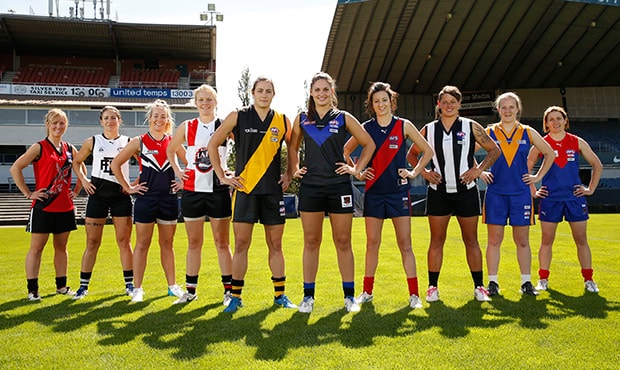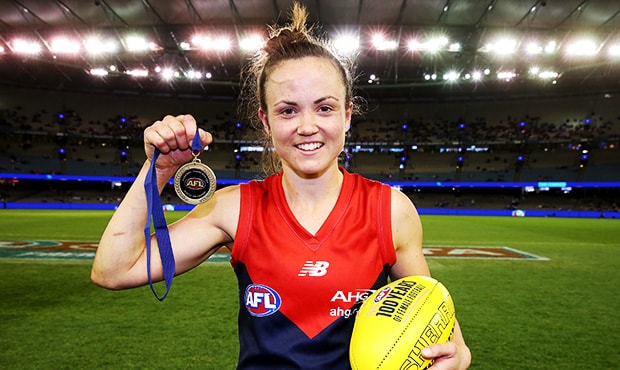WOMEN'S football has received another boost with the establishment of a Victorian state league competition aligned with the VFL for the 2016 season.
The new competition will feature 10 clubs – this year's VWFL Premier Division teams (the Darebin Falcons, Diamond Creek, Eastern Devils, Melbourne Uni, St Kilda and VU Western Spurs), and the top four Division One sides - Cranbourne, Geelong, Knox and Seaford.
The yet-to-be-named competition will be aligned with the existing men's state league, which will expose the VFL's fan base to women's football and encourage the growth of its audience.
"This will be the first step in establishing a professional women's state league competition in Victoria, but it will take time to mirror all aspects of the men's league," AFL Victoria CEO Steven Reaper said.
"With the AFL national women's competition on the horizon, we need to provide the best standard competition for these players, and a dedicated state league for women will help set that benchmark, providing a much needed next step in the female talent pathway.
Players from the 10 teams that will make up the new women's competition. Picture: AFL Media
"[A total of] 73 of the 109 players invited to the new AFL Victoria Women's Football Academy that started last Sunday are from the 10 proposed state league teams, highlighting the depth of talent that will be on show."
The AFL has plans to establish a national women's competition from 2017 onwards.
It comes on the back of the recent success of the exhibition matches staged between Melbourne and the Western Bulldogs; the second of which this season was the first to be televised.
The 10 clubs involved in the state women's league are geographically placed across Victoria, which will help deliver the game to a range of football supporters.
Women's footy star Daisy Pearce with her 2015 best-on-ground medal. Picture: AFL Media
"This is the starting point for something really exciting in women's football," Reaper said.
"By developing a women's state league competition from current VWFL clubs we will be able to utilise already established playing squads, grounds and support staff, and it will also assist with player retention.
"It means the state competition will be able to help develop talent across Melbourne and into some country regions in the future."
The VWFL, which has grown from 27 clubs and 34 teams in 2013 to 36 clubs and 50 teams this season, will remain in its current divisional structure.
The 10 state league clubs will to continue to field their second and third teams in that competition.
"This growth and development of the VWFL competition means a women's state league in Victoria will now be a reality," Reaper said.
A competition name, season length, fixture and finals format will be decided in the next few months.


